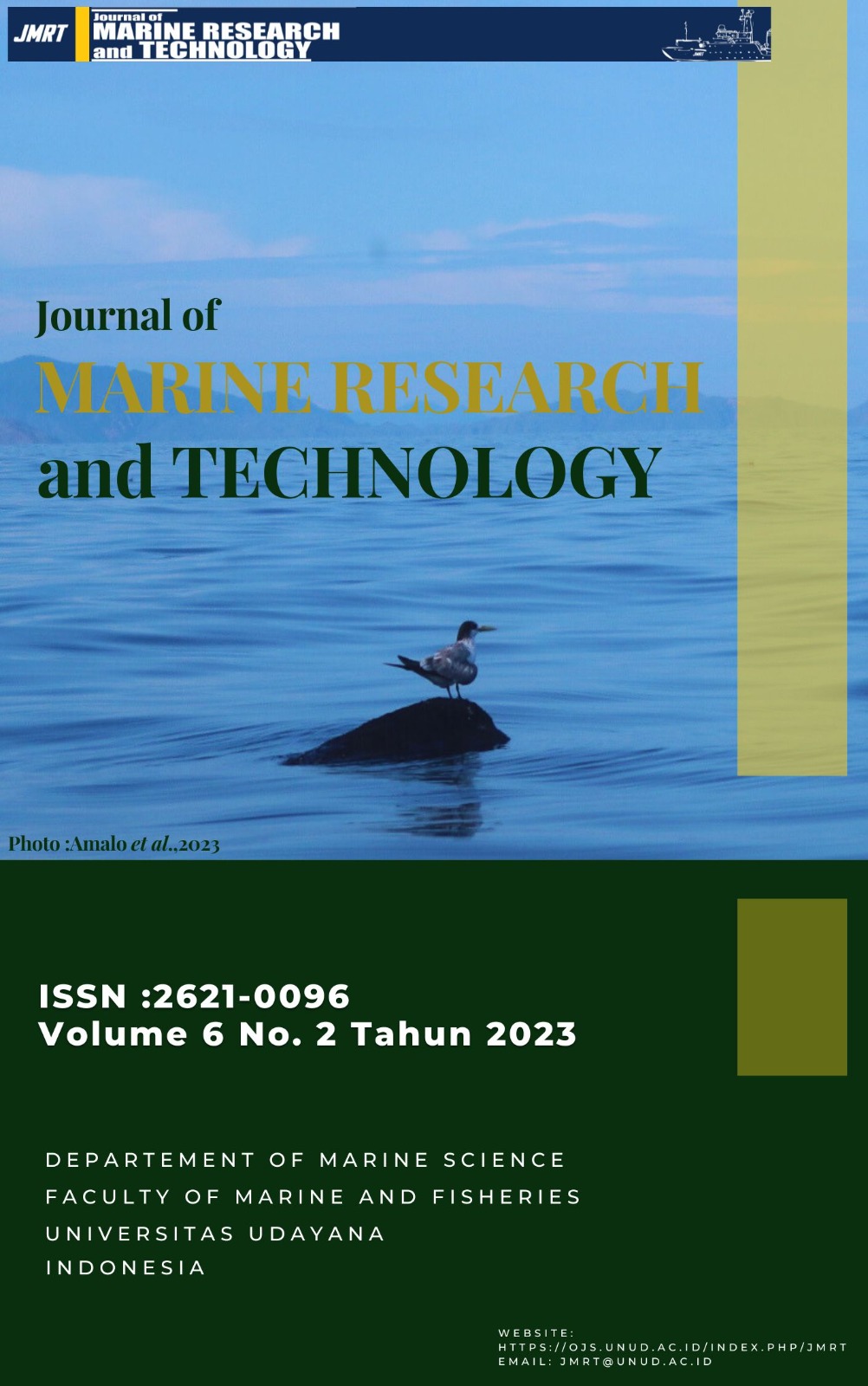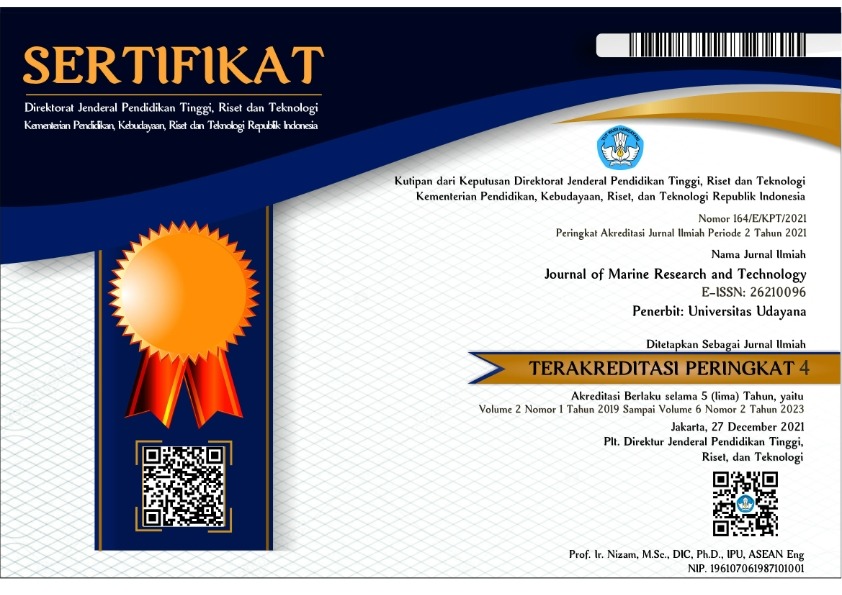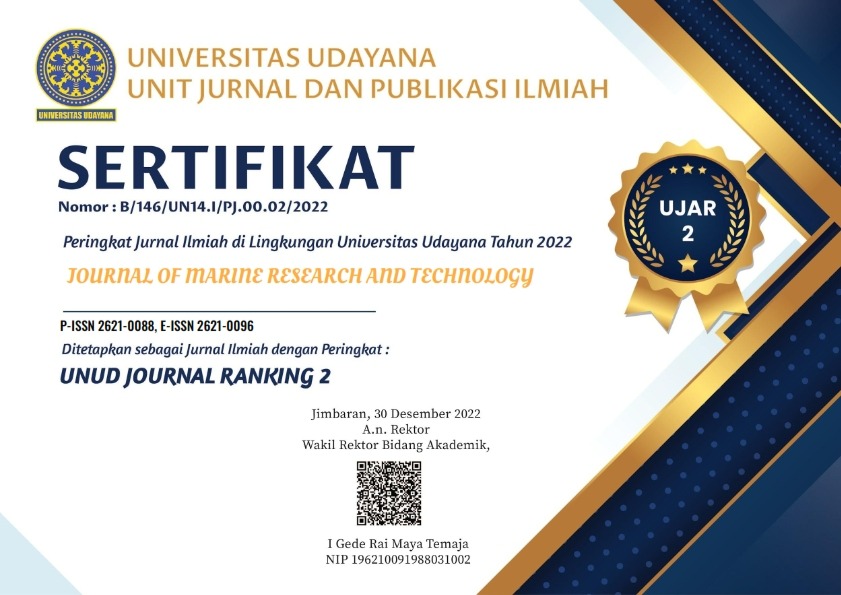Kandungan Mikroplastik Pada Gastropoda di Kawasan Tahura Ngurah Rai, Bali
Microplastic; Gastropod; Abundance; Mangrove
Abstract
The mangrove ecosystem can be affected by the dangers of microplastics, indicated by various associated biota that lives in it, one of them being gastropods. This study aimed to determine microplastics’ content in gastropod body mangrove sediments at Tahura Ngurah Rai, Bali using gastropods as bioindicators. This research was conducted from May to June 2022, using in situ and ex situ methods. In situ, data were conducted at Tahura Ngurah Rai, Bali, as the sampling location, and ex situ data were conducted at Udayana University’s marine science laboratory by sample processing. The data taken includes the characteristics of microplastics, including the type, size, color, and abundance of microplastics in gastropods at the sampling station. Results showed that 5 families of gastropods (Ellobiidae, Littorinidae, Muricidae, Neritidae, and Potamididae) were contaminated with microplastics, with the highest abundance found in Potamididae, with the number 4,06 ± 2,19 particles/individual. The types of microplastics obtained were fragments, fibers, and films dominated by fibers collected 210 particles. The color of the microplastics varies and dominated with black colored microplastics was found 78 particles, and the size of microplastics is dominated by < 1 mm particles with several 145 particles. The highest abundance of microplastics was found on site 12 with the number 5,67 ± 4,04 particles/individual.
Downloads
Copyright Notice
The copyright to this article is transferred to Journal of Marine Research and Technology (JMRT). The copyright transfer covers the exclusive right and license to reproduce, publish, distribute and archive the article in all forms and media of expression now known or developed in the future, including reprints, translations, photographic reproductions, microform, electronic form (offline, online) or any other reproductions of similar nature.






